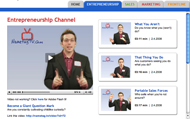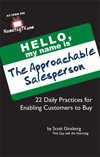 Writing might be the single most important act anyone could practice.
Writing might be the single most important act anyone could practice.
For your business, for your brain, for your heart, for your soul, for your body and for your life. Writing is everything.
Now, I may be a little biased, as my occupation is a writer.
But that shouldn’t matter. Everyone should write. Everyone CAN write. Everyone must write.
Even if you’re not that good. Even if you never publish anything. Even if you don’t like what you produce. There are some things in life that are just too healthy and too important to avoid, like exercise and chocolate and sex.
Well, writing is one of those things. Writing is everything. So, I put together this list of the twenty-three elements inherent in ALL writing. Use this list as a guide to enhance your own writing practice. Even if you don’t consider yourself a writer.
1. Writing “rights” things. Because it clarifies. Because it releases. Because it is filled with the spirit of God. Because it’s fueled with love and passion and raw emotion. Once your thoughts and emotions and pains and dreams exit your head and find a home one the page, they become public in your mind. Even if nobody ever reads it, the therapeutic, cleansing nature of writing is one of the healthiest ways to “right” something. What do you need to let out?
2. Writing rewards practice. The more you write, the better you get. The better you get, the more you want to write. This cycle goes on forever. I call it “The Circle of Write.” The challenge is, only works if you practice it. That means every day. EVERY day. Have you written today?
3. Writing Advice: Finish. If starting is the hardest part, finishing is a close second. So, face the fact that it’s never going to perfect. It’s never even going to be “done.” You’ll always want to add and subtract and improve and edit. Learn to let that go. It is what it is. Eventually there comes a time when you have to throw up your arms and declare, “The hay is in the barn.” What have you finished lately?
4. Writing brings clarity. You don’t know what you know or believe or feel about anything until you’ve written about it yet. You also haven’t mastered anything until you’ve written about it yet. Writing is your baseline. Make it the first place you go. How are you using the page to clarify your thoughts?
5. Writing intensifies impact. Got a big speech coming up? Having an important discussion with your kids tonight? Write it first. Just sit down and puke out everything that’s on your mind. That doesn’t mean, “prepare a script.” You don’t even have to keep the document if you don’t want. It’s about the process. The catharsis.
And I promise you, this exercise ALONE will immediately double the impact of your message. Your thoughts – now clarified and strengthened – will be etched upon your consciousness forever. And when the time is right, IF you learn to trust your inner resources, all you have to do is tap that reservoir of Truth and let the words flow. Have you written about it first?
6. Writing is alchemy. Famed alchemist Jean Dubuis remarked, “Alchemy is the art of manipulating life, and consciousness in matter, to help it evolve, or to solve problems of inner disharmonies.” That’s what writing does for you. It gives you permission to swish and swirl your ideas on the page, allowing the self-organizing system of creativity to generate an antidote. What are you turning your problems into?
7. Writing is listening. To your mind. To your heart. To your Muse. To your inner voice. To your gut. To the voices in your head. Think of yourself as a journalist. A note-taker. A court stenographer. Getting down whatever is dictated to you, trusting that what gets written is what WANTED to be written. Whom (or what) are you listening to?
8. Writing is medicine. The health benefits of writing have been proven time and time again. Best-selling books on the subject like Writing Down the Bones, The Artist’s Way, If You Want to Write, Writing to Heal and The Writing Diet cite dozens of these studies, none of which I can remember or feel like looking up. The point is: Writing is the great healer. I know this from my own practice as well as the lives of my clients, colleagues and loved ones. Writing is healthy. Period. How are you using writing as therapy?
9. Writing is non-negotiable. It’s right up there with exercise and meditation on my list of “Things I MUST Do Every Day.” It’s a non-negotiable because it’s beyond habit, beyond discipline. It’s something you just do. Without thinking. Without contemplating. It just happens. You can’t (NOT) do it; people couldn’t pay you (NOT) to do it, and you can’t imagine living without it. What are your non-negotiables?
10. Writing is power. Over your emotions. Over your competitors. Over your demons. Over your past. The pen is mightier – and better, and stronger and more effective – than the sword. Swords are for losers. Writing is for winners. Powerful people write. Period. How are you using writing to put yourself in a greater position of power?
11. Writing is prayer. The word “prayer” comes from the Latin precari, which means, “to ask earnestly or beg.” That’s exactly what you’re doing when you sit down to write. You earnestly ask the page – and yourself and your Muse and your heart – to speak to you. Hell, you’re just there to take notes anyway. So, you just pray, listen and capture. That’s writing in a nutshell. Three steps. The challenge is finding your own unique ritual to invoke those power sources.
Personally, I recite the following incantation every morning before I write ANYTHING: “I am completely stopping … I embrace this moment … I expect nothing … I am richly supported … I trust my resources … I am equal to this challenge … I am ready to write…” If you’d like to learn more about this process, read Ten Zen Seconds by world-famous Creativity Coach, Eric Maisel. How are you transforming your writing practice into a spiritual practice?
12. Writing is rewriting. Always honor and capture your first rising thoughts. They contain truth and beauty and innocence and power. Still, rewriting is an essential component to your practice. I suggest waiting at least 24 hours before doing so. Here’s why: (1) you ALLOW your subconscious to go to work while you’re doing other tasks, digging up new ideas that were impossible to access initially, (2) you RETURN to your writing fresh, enabling you to see things you missed the first time around, (3) you’re READY to trim, distill and whittle down your work to the essence, removing extraneous words and ideas, and (4) you EXIST in a different state of mind than before, permitting new perspective to flourish. What did you (re)-write today?
13. Writing is self-communication. You can’t LEAD others unless you lead yourself first. You can’t LISTEN to others unless you listen to yourself first. You can’t TEACH others unless you teach yourself first. You get the point: Start with yourself. Ask yourself first. Consult your gut. Trust your own judgment before anyone else’s. Self-communication. That’s what writing is. Have you talked to yourself on paper today?
14. Writing is waiting. That’s why most writers are absurdly patient. Sometimes, when a KILLER idea for a new story or module or character comes to you, you’re not always ready to write about that thing yet. So, you capture the essence of your idea, save it and store it. And then you just wait. That’s it. And what kind of sucks is, you have NO idea when that particular idea will be ready for cultivation. All you can do is wait for it to speak to you, on its own terms. As a writer (excuse me, as a LISTENER) your job is write what wants to be written, when it wants to be written. Writing is waiting. How patient are you willing to be?
15. Writing requires intimacy. That’s what scares a lot of people away from it. Writing, as I define it in my workshops and with my coaching clients is: “Sitting down every day, slicing open a vein and bleeding your Truth all over the page.” I know. Kind of intimidating, huh? But that’s the reality. At least, that’s the reality of GOOD writing. The challenge is being able to confront your Truth. The challenge is courageously becoming very, VERY familiar with yourself. How well are you willing to know yourself?
16. Writing requires steps. In my program, Write into Wealth, I teach writers about the ENTIRE writing process. Content Generation, Content Management and Content Delivery. Here’s a quick summary: (1) SCANNING – Listening, Noticing, Foddering, Freezing; (2) PLUCKING – Extracting, Yoinking, Grabbing; (3) GROWING – Assumption Recasting, Dimensioning, Breeding, Puking, Bathtubbing, Synthesizing, Tourniquetting; (4) ROUNDING – Chronologizing, Simmering, Kneading, Metabolizing, Etching, Incubating, Reservoiring. Now, those words might mean NOTHING to you. In fact, most of those steps aren’t real words – I invented them for my own program. But, just so you know, that’s a sample of the different steps in my writing process. Have you chronicled the different steps in yours?
17. Writing teaches everyone. Even the smartest guy in the room will learn something about himself, about others and about the world, if he simply sits down and releases his first burning thoughts. Writing is the great teacher, and it’s inside each one of us, waiting for class to start. What are you allowing to mentor you?
18. Writing transforms pain. Into love. Into stories. Into awakenings. Into lessons. Into learnings. Into gold. Into light. Into that which is positive and beautiful and good. Writing, besides being a great teacher, is also a great Alchemist. Using your pain as the base metal, mixing that with the spirit of the divine, then coming out with something shiny and gorgeous. What are you turning your problems into?
19. Writing untangles threads. Especially when you learn how to make Puke Lists. Vomiting out every single thought in your head in a bullet-point list treats all ideas with deep democracy. It allows the inherent geometry of an idea set to unfold on its own without your intervention. The challenge is, you’re kind of like the magician caught in a straightjacket: If you freak out and let your emotions take over, you forget to breathe and are never able free yourself. On the other hand, if you relax into it, allowing the natural patterns to work out their own problems, the threads will untangle themselves. What do you have in your head that requires untangling?
LET ME ASK YA THIS…
What did you write today?
LET ME SUGGEST THIS…
For the list called, “9 Things Every Writer Needs to Do Every Day,” send an email to me, and I’ll send you the list for free!
* * * *
Scott Ginsberg
That Guy with the Nametag
Author, Speaker, Coach, Entrepreneur
[email protected]
 Can’t finish that book?
Can’t finish that book?
Bummer. Perhaps my monthly coaching program would help.
Rent Scott’s Brain today!
 In ONE word: Relax.
In ONE word: Relax. Never the same speech twice.
Never the same speech twice.
 Ahhhhh…!
Ahhhhh…! Writing might be the single most important act anyone could practice.
Writing might be the single most important act anyone could practice.
 “A true Ninja uses his surroundings to survive.”
“A true Ninja uses his surroundings to survive.” On May 14th, 1998, Seinfeld went off the air.
On May 14th, 1998, Seinfeld went off the air.
 Do we really need more idea people?
Do we really need more idea people?
 Probably someone who works HARDER than you.
Probably someone who works HARDER than you.
 When I conduct
When I conduct  Blaaaargh.
Blaaaargh.